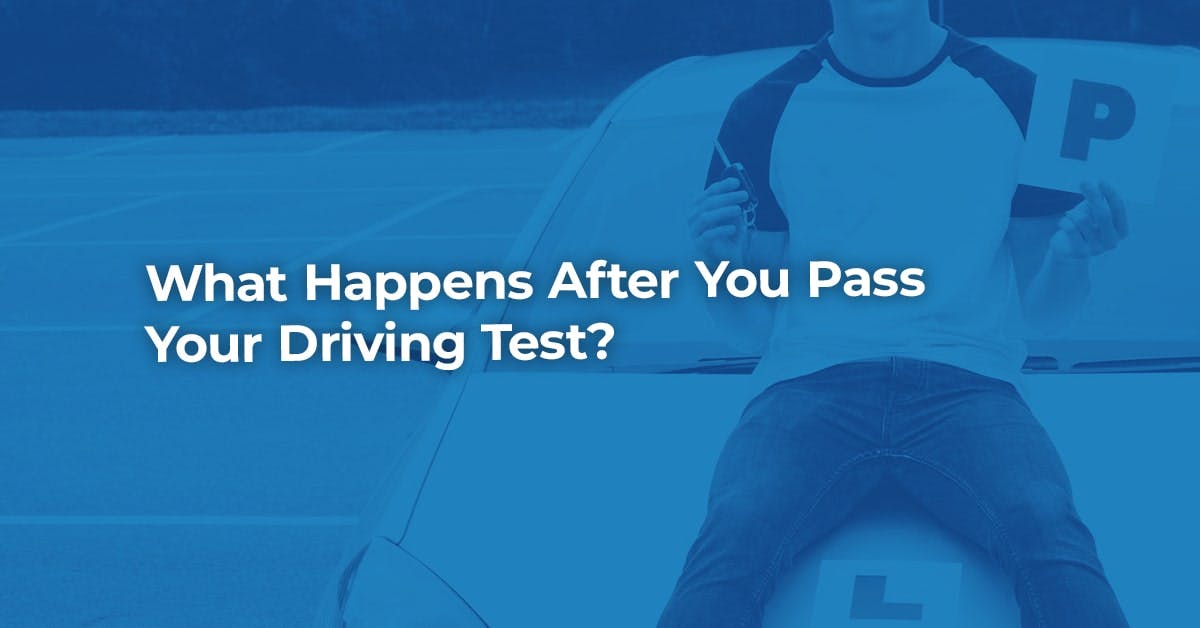Months of preparation and thought go into preparing for your driving test – but have you thought about what happens after you pass?
As exciting as your new driving licence is, there are still a few things you need to think about before you get out on the open road.
Read on and find out what happens after your pass your test, if you can drive straight away, and what you still need to do as a new driver.
Page Contents
What Happens When You Pass Your Driving Test?
Once you have passed your practical driving test, your examiner will provide you with a pass certificate and ask if you want your full licence to be sent to you automatically.
If you do, you will have to give your examiner your provisional licence.
If you don’t, you can apply for your full driving licence by post.
You must do so within two years of passing, or your pass certificate will expire and you will have to take the test again.
You must have an insurance policy that lets you drive without supervision.
When You Pass Your Driving Test Can You Drive Straight Away?
If you pass your theory test and the practical exam, then you can start driving straight away – provided that your car is taxed and insured.
Your examiner will usually arrange for your provisional licence photocard to be sent to the DVLA, so that it can be upgraded to a full driving licence.
You may have to wait up to 3 weeks to receive your updated photocard in the post, but you won’t have to wait until it arrives to start driving.
If your new licence doesn’t arrive within 3 weeks of passing the test, you should contact the DVLA.
You will need to apply for a full licence yourself if you have to make changes to your licence, such as changing your address or photo.
You'll want to ensure that you've mastered all necessary driving manoeuvres before you start driving.
There are a few mistakes that new drivers can be guilty of making, so try your best to avoid the ones mentioned in this blog.
Do I Need P Plates After Passing My Test?
Whilst it isn’t compulsory, some drivers do decide to display green ‘probationary’ P plates on their car.
P plates can signal to other road users that you have recently passed your test and are still getting used to driving.
This is a good option if you are still feeling a bit anxious about driving – other drivers should see the P plates and give you more space at junctions and roundabouts.
You can display P plates for as long as you want, and you could even enrol on a Pass Plus course if you want to improve your driving skills on motorways, at night, and in bad weather conditions.
Not to mention that many insurance companies lower premiums for new drivers who have completed a Pass Plus course.
Should I Get Black Box Car Insurance?
As a new driver, you are statistically more likely to be involved in an accident than other drivers – meaning your insurance bills will be higher.
Black box insurance – or telematics – can help safe new drivers get discounts on their premiums.
A black box uses GPS technology to track your driving habits, monitoring the roads you travel on regularly, and the times you tend to drive at.
This information is then sent to your insurance company to determine how safe you are – the better your score, the cheaper your insurance will be at renewal time.
How Do I Tax My Car?
Road tax is required by law to drive in the UK.
You can tax your car online through the DVLA website and pay it annually or monthly.
The price of road tax can vary depending on the make and model of the car you buy, with tax bands being based on engine size, fuel type and CO2 emissions.
If your vehicle is particularly environmentally friendly, then you may not have to pay any tax at all.








No comments yet
Leave a comment